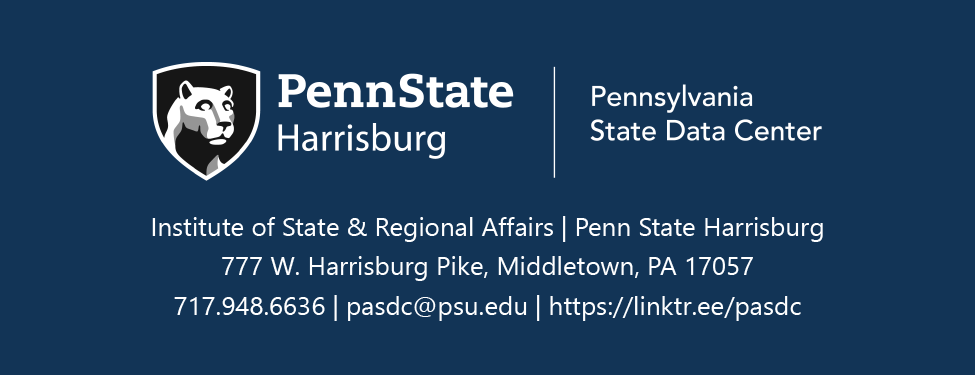
All communities rely on physical spaces that are vital to the well-being of their citizens, such as grocery stores, recreational facilities and pharmacies. But what happens when these places are lost, especially in rural areas where no alternatives exist?
Two new studies led by researchers in Penn State’s College of Agricultural Sciences and College of Health and Human Development — one published in the journal Wellbeing, Space and Society and the other in the Journal of Rural Health — analyzed the experiences of residents in one such rural Pennsylvania community after the closure of several of these essential places.
Closures included a grocery store, bank, hardware store, church, primary care clinic, pharmacy and two restaurants — some due to population loss and some as the result of the pandemic.
Both studies found that the loss of these spaces had well-being and social impacts. For example, the loss of the area’s only grocery store severely limited access to healthy food and decreased opportunities for social connection. Additionally, the loss of the area’s sole pharmacy and health care facility resulted in impacts on health, such as delays in seeking care and an over-reliance on local emergency medical services.
Kristina Brant, co-author on both papers and assistant professor of rural sociology, said the findings help showcase why the closures of community institutions — especially in rural areas — matter, and could help policymakers and practitioners find ways to improve and sustain well-being for these communities.
“While some people may be able to travel to the next town over to access services, this isn’t possible for everyone, so these closures could perpetuate inequalities between residents,” Brant said. “By documenting how communities are impacted by these closures, we can better show why helping communities preserve their institutions is important, while also considering strategies to help communities adapt and pivot when they do lose essential community institutions.”
In recent years, the researchers said, there has been population loss across much of rural America. Between 2010 and 2020, two-thirds of rural counties saw a decrease in their populations. And when populations decrease, community institutions can be threatened — it can be difficult to sustain businesses and organizations amid a declining number of community members.
Danielle Rhubart, first author of the paper in Wellbeing, Space and Society and assistant teaching professor of biobehavioral health, said it’s important to consider how a loss of these institutions can impact the community members who stay.
“A lot of the focus in previous research has been on the importance of these places in urban settings,” said Rhubart, who also co-authored the paper in the Journal of Rural Health. “We were interested in how the loss of these community institutions impacts rural community health and well-being.”
For both studies, the researchers interviewed 26 local residents. Questions were broad and open-ended, including ones about perceptions of the interviewees’ community. While the studies were limited to one area, the researchers said their findings could represent similar experiences in other rural locations across the United States.
In the paper led by Rhubart, the researchers examined how community members were affected by the loss of spaces not related to health care, such as grocery stores. In the paper in the Journal of Rural Health — led by Hazel Velasco Palacios, a doctoral student in rural sociology and in women’s, gender, and sexuality studies — the team explored how people were impacted by the loss of the area’s only health care institution.
“While we were interested in the closures in their community, we did not lead with this, choosing instead to ask questions such as ‘What are some of the challenges that you think the town and the people who live here are facing?’” Brant said. “The fact that so many respondents answered this question by talking about the closures signaled to us how these closures were top of their list of concerns.”
They found that following the loss of the area’s only clinic and pharmacy, community members reported having to travel farther for basic health care needs, which added stress to their lives. People also reported becoming increasingly dependent on others to get care — for example, needing to rely on neighbors or friends for rides.
Velasco Palacios said while this reliance on social networks demonstrates the self-resilience of the community, it also posed challenges.
“In cases where networks were not robust or relationships became strained, some residents struggled to access reliable care,” she said. “This dual nature of social networks — both a critical lifeline and a potential vulnerability — adds nuance to our understanding of how rural communities adapt to the loss of essential services.”
Residents also reported that this restricted access led to people being more likely to delay seeking care, to call on emergency medical services and to ration medication to make it last longer, suggesting that the loss of local health care institutions could contribute to negative health outcomes.
But the researchers found that the loss of places not obviously linked to health — such as grocery stores and banks — also has the potential to impact health and well-being. Because these spaces are often multifunctional and the only one of their kind in the area, Brant said, losing these places may be especially impactful in rural areas.
“For example, the loss of the town’s only grocery store limited people’s access to fresh food and also their access to social connection,” she said. “Because it was one of the few central institutions in the community, it operated as a community hub.”
The loss of certain places, such as the area’s pharmacy and health care facility, especially impacted more vulnerable groups, the researchers said. These groups included older adults, people with disabilities and working-class families, who reported delays in accessing care and the loss of trusted care providers.
While both studies illustrated how impactful the loss of these community institutions were to residents, the researchers said future work could continue to explore the loss of essential spaces across other varied, more diverse rural landscapes.
Jennifer Kowalkowski, assistant professor of nursing, and Jorden Jackson, graduate student in rural sociology and demography, were also co-authors on the studies.
The U.S. Department of Agriculture’s National Institute of Food and Agriculture and Penn State’s Social Science Research Institute helped support this research.







